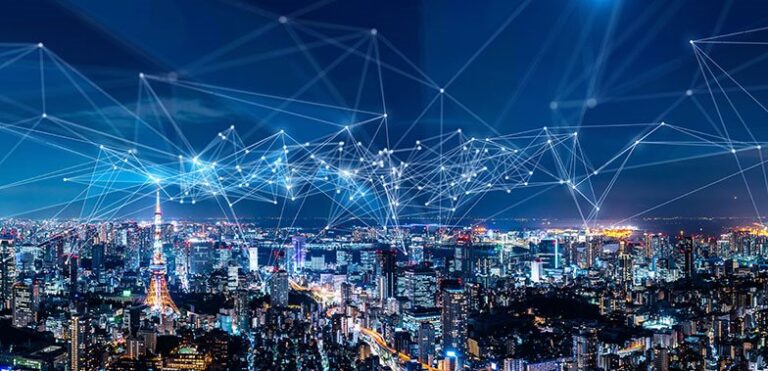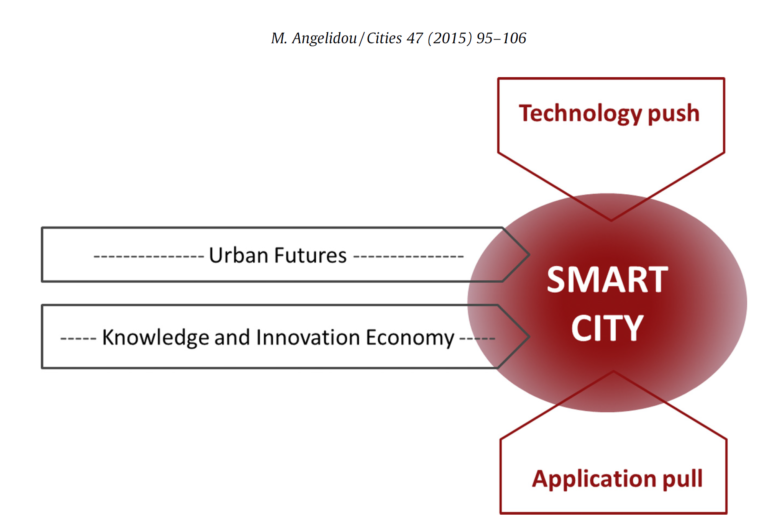In this blog author discusses about the technologies by which we all are surrounded these days. the way author has described about smart cities and how they affecting us is very clear. Described the history and evolution of smart cities done greatly but can be more elaborated.
Author should have incorporated some information about the role of smart cities in terms of sustainability because it is one of the important concerns of any future development and also should have explained about the pros and cons of having smart cities like:
Making better informed and efficient decisions: With the help of a well-thought-out data analysis approach, city officials can access and process vast amounts of data to produce insightful and practical information. A city experiences a sharp rise in service levels when it is able to track desirable indicators in real time.
Improved transportation capabilities: One of the biggest opportunities to significantly increase efficiency across the city is through connected transportation systems. Despite the fact that populations frequently grow quickly, smart technologies enable cities to better serve their inhabitants in a number of ways, from better traffic management to the ability to track the position of buses and trains.
Effective public services: Since there is a finite number of natural resources to meet human demand, smart technologies are giving cities the means to reduce and effectively conserve the amount of water and electricity that is wasted unintentionally.
Lessening the environmental footprint: Cities are gaining new instruments to lessen their ecological imprint, such as renewable energy sources, air quality sensors, and energy-efficient structures.
Extremely limited privacy: It is more difficult to preserve anonymity due to the usage of security cameras and intelligent devices connected through various spaces. The concept of personal privacy has undergone significant shift due to technologies like facial recognition.
Social control: The person in charge of the data has a lot of power since they can monitor and organize it. Anyone with access to citizen data, whether a government agency or a private company, has the ability to influence, intimidate, and attempt to manipulate public opinion.
Over-reliance on networks and electronics: Cities that rely nearly solely on these resources forfeit their autonomy in making decisions and run the risk of becoming unable to respond or take action in the event that these resources are unavailable.
The case studies chosen Smart traffic management : monitoring traffic flows for optimising traffic lights and Public Health Provision : Responding to rapid changes of societal needs are really good but can be more detailed out which will make it more easier to understand and also should have discussed about if there is any government policies regarding smart cities.
In conclusion, after reading this blog it shows the author has great knowledge and also vision about smart cities, which is also reflected in his writing.








In this blog author discusses about the technologies by which we all are surrounded these days. the way author has described about smart cities and how they affecting us is very clear. Described the history and evolution of smart cities done greatly but can be more elaborated.
Author should have incorporated some information about the role of smart cities in terms of sustainability because it is one of the important concerns of any future development and also should have explained about the pros and cons of having smart cities like:
Making better informed and efficient decisions: With the help of a well-thought-out data analysis approach, city officials can access and process vast amounts of data to produce insightful and practical information. A city experiences a sharp rise in service levels when it is able to track desirable indicators in real time.
Improved transportation capabilities: One of the biggest opportunities to significantly increase efficiency across the city is through connected transportation systems. Despite the fact that populations frequently grow quickly, smart technologies enable cities to better serve their inhabitants in a number of ways, from better traffic management to the ability to track the position of buses and trains.
Effective public services: Since there is a finite number of natural resources to meet human demand, smart technologies are giving cities the means to reduce and effectively conserve the amount of water and electricity that is wasted unintentionally.
Lessening the environmental footprint: Cities are gaining new instruments to lessen their ecological imprint, such as renewable energy sources, air quality sensors, and energy-efficient structures.
Extremely limited privacy: It is more difficult to preserve anonymity due to the usage of security cameras and intelligent devices connected through various spaces. The concept of personal privacy has undergone significant shift due to technologies like facial recognition.
Social control: The person in charge of the data has a lot of power since they can monitor and organize it. Anyone with access to citizen data, whether a government agency or a private company, has the ability to influence, intimidate, and attempt to manipulate public opinion.
Over-reliance on networks and electronics: Cities that rely nearly solely on these resources forfeit their autonomy in making decisions and run the risk of becoming unable to respond or take action in the event that these resources are unavailable.
The case studies chosen Smart traffic management : monitoring traffic flows for optimising traffic lights and Public Health Provision : Responding to rapid changes of societal needs are really good but can be more detailed out which will make it more easier to understand and also should have discussed about if there is any government policies regarding smart cities.
In conclusion, after reading this blog it shows the author has great knowledge and also vision about smart cities, which is also reflected in his writing.
In this post,it provides different angle and concept of the smart city for me and I have a total new overview of the smart city that how it can change citizes’ lives in the modern times.In my former opinion,I just thought the development of the smart city is developed with the progress of developing internet and applicance technology.With the help of making advanced internet and technology as basis so that the concpet of smart city has been worked out.What you have recommended that offers some new method of treating smart city and how to make our living environment become more smart than before.
The process of making smart city,as you mentioned in the post,is a long-term develoment and evolution which is a comprehensive generation.It displays the generation of smart city is not only using internet or technology as basis but also depends on the urban planning to think about developing smart city.Urban planning can be a cutting point to develop smart city.With the help of generation of smart city,cities can change their past planning to be more reasonable or constructing new part of city reasonably.Meanwhile the evolution of smart city always keeps the pace with times.It always adjusts itself in different eras to fit the current era.By the way,the generation of smart city also put emphasis on citizens.Citizens are the role of cities who create every aspect of smart city and use every part of cities.According to TWI(2023),citizens are core like in enabling social inclusion and community engagement.These parts with citizens’ engagement will reflect many response no matter they are positive or negative response,which will evolute development of smart city.
The feature of smart city comprehensively reflects the characters of new eras.Nowadays the technology and applicances are in the best level.They can make our life more convenient and wonderful than old times.By the way new technology can be the best solution for any problems during the process of smart city.For example,Copenhagen,you mentioned in the post,the government make some changes due to the its famous feature:bicycle.The government use new technology to create cycle system to serve Copenhagen’s citizens.Meanwhile the government reconstructs cycle ways in the city.What the government has done are all for providing convenience for citizens commuting and daily life.In some terms the system can be helpful in saving resources and improving safety(Weforum, 2020).Santa Monica is also an excellent example in the smart city which serves for citizens.Public health is one of the significant factor in this city.A city should not only put energy on economy,but also focus on citizens’ feelings.And the government should make good use of every types of media to hear citizens’ demands and try to satisfy them.That’s one of the key point to make a city become smart city.
Reference:
Weforum (2020). Smart at Scale: Cities to Watch 25 Case Studies. [Online] Weforum. Available at: https://www3.weforum.org/docs/WEF_Smart_at_Scale_Cities_to_Watch_25_Case_Studies_2020.pdf
TWI (2023). WHAT IS A SMART CITY? – DEFINITION AND EXAMPLES. [Online] TWI. Available at: https://www.twi-global.com/technical-knowledge/faqs/what-is-a-smart-city#SmartCityDefinition